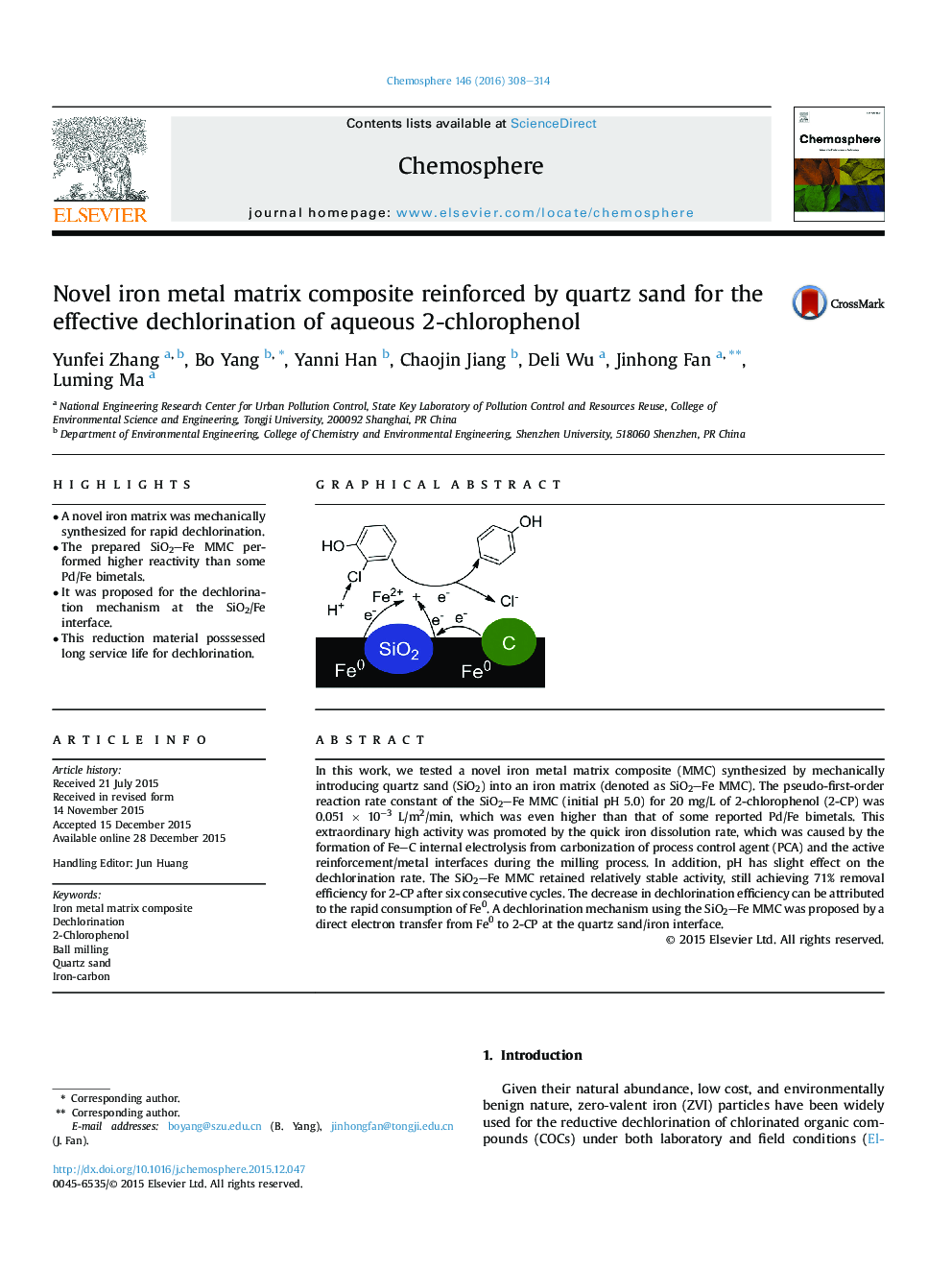| Article ID | Journal | Published Year | Pages | File Type |
|---|---|---|---|---|
| 4407982 | Chemosphere | 2016 | 7 Pages |
•A novel iron matrix was mechanically synthesized for rapid dechlorination.•The prepared SiO2–Fe MMC performed higher reactivity than some Pd/Fe bimetals.•It was proposed for the dechlorination mechanism at the SiO2/Fe interface.•This reduction material posssessed long service life for dechlorination.
In this work, we tested a novel iron metal matrix composite (MMC) synthesized by mechanically introducing quartz sand (SiO2) into an iron matrix (denoted as SiO2–Fe MMC). The pseudo-first-order reaction rate constant of the SiO2–Fe MMC (initial pH 5.0) for 20 mg/L of 2-chlorophenol (2-CP) was 0.051 × 10−3 L/m2/min, which was even higher than that of some reported Pd/Fe bimetals. This extraordinary high activity was promoted by the quick iron dissolution rate, which was caused by the formation of Fe–C internal electrolysis from carbonization of process control agent (PCA) and the active reinforcement/metal interfaces during the milling process. In addition, pH has slight effect on the dechlorination rate. The SiO2–Fe MMC retained relatively stable activity, still achieving 71% removal efficiency for 2-CP after six consecutive cycles. The decrease in dechlorination efficiency can be attributed to the rapid consumption of Fe0. A dechlorination mechanism using the SiO2–Fe MMC was proposed by a direct electron transfer from Fe0 to 2-CP at the quartz sand/iron interface.
Graphical abstractFigure optionsDownload full-size imageDownload as PowerPoint slide
